

 |
frequent fliers |  |
 |
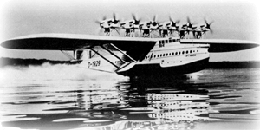
|
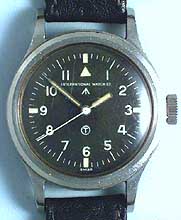 |
| I keep thinking of all the stories these watches could tell! The Longines is an early steel-cased wristwatch with signed lever calibre 15.94 movement, circa 1920, diameter 40 mm. This model was apparently used by the Czechoslovakian Air Force. The Mark XI succeeded the venerable Mark X in 1948, featuring a central seconds hand and the same reliability as its predecessor. Mark XII took over in 1994, and was in turn followed by Mark XV in 1999. The newcomer with a slightly larger case and ETA movement still has to earn its spurs. |
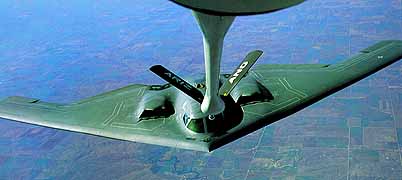 |
| Breitling uses the slogan "instruments for professionals" to advertise their watches. I immediately have two reservations: if their watches are as good as they are supposed to be, why didn't a Breitling chronograph go to the moon? Secondly, I wonder how many "professionals" appreciate gold, diamond-encrusted timepieces on their wrists (I suppose it depends on what sort of "professionals" we are talking about). When Breitling launched its Navitimer chronograph fitted with a circular slide rule in 1952, on-board computers and global positioning systems were the stuff of science fiction. Pilots still had to make do with a cumbersome "navigation computer" to prepare their flight plans. They soon discovered the merits of the Navitimer, delighted by an instrument that combined two tools so vital to navigation. Today's Navitimer makes pilots appreciate the merits of an all mechanical instrument when there is too much reliance on electronics. |
| Although I am not fond of quartz watches, I do like the Breitling Aerospace Repetition Minutes on the right for obvious reasons: its many functions are usable, the dial is extremely readable, and it is unobtrusive to wear. I would prefer it in titanium with dark gray dial, though. |
|
|
 |
In 1926, the economic situation in the German town of Glashütte was desolate due to the collapse of the market for expensive precision watches at the outbreak of World War I. December 1926 saw the foundation of a group of companies, which, it was hoped, would put an end to the structural crisis. Uhren-Rohwerke-Fabrik Glashütte AG - UROFA - and Uhrenfabrik Glashütte AG - UFAG were set up, headed by the jurist Dr. Ernst Kurtz. Under his management, the companies developed and produced their own superior quality pocket-watches as well as ebauches for wristwatches |
| This led to a series of movements that were every bit as good as the competition from Switzerland. The top quality models were named "Tutima." The name was derived from the Latin adjective "tutus", meaning "safe" or "protected". The highlight of the early Tutima watch manufacture was the development of the Classic Flieger Chronograph. This model set new aesthetic and functional standards, and is regarded as the archetype for many subsequent designs. On May 8, 1945, just hours before the cease-fire, Russian bombers wreaked havoc over Glashütte, severely damaging the metropolis of German watchmaking. Under the East German government, the factories were later merged into a state-owned combine; the famous Glashütte trade names vanished from the face of watches. |  |
 |
However, Tutima survived and found a new home in West Germany. Coincidence or not: Dr. Ernst Kurtz, successful head of UROFA and UFAG, had packed his belongings and left Glashütte just one day before the bombings. |
|
That same year, he set up a new company, Uhrenfabrik Kurtz, in the South of Germany. In 1951, the company moved to Ganderkesee in Lower Saxony. Together with former Glashütte employees, Kurtz picked up where previous developments had left off. The inscription "Kurtz Glashütter Tradition" on the dials unequivocally announced their intention of maintaining the watchmaking standards of the past. On the left is the modern Airforce Chronograph, on the right, a true watch bargain, the Tutima Pacific. |
| As time moved on, Tutima continued its association with military applications, although I regret to say that in my two years in Germany's tank corps, nobody ever offered to issue me a watch of any kind! The look of Tutima's Military Chronographs is professionally utilitarian. One special chronograph feature that is greatly appreciated, and not just by pilots under stress, is the minute timer with its red tip, which is conspicuously placed at the center. This allows the user to track stop functions of up to 60 minutes more clearly than with the irritating yet common small 30-minute timer. Further outstanding features of the chronographs are the 24-hour indicator at the "12" and the practical calendar with day and date. The chronographs have a sapphire crystal with inside anti-reflection treatment and a starkly contrasting dial. The luminous compound on hands and hour markers contains no tritium, so there is no radiation. The solid stainless steel case with chamfered edges surrounds the chronograph movement like a safe. This guaraties that the watches are unaffected by hard knocks, vibrations, and accelerations of up to 7 g in any direction, as well as magnetic fields of up to 1000 oersted. With the backs securely screwed to the case, the Military Chronographs are equally at home 200 meters under or 15,000 meters above sea level. |
|
|
| In the center are two versions of Citizen's Navihawk Flight Chronograph, naturally quartz, and as complicated as a pocket computer. They feature: time and calendar in 22 World Time Zones, retractable hands for display visibility, help display of button functions, one-touch interchangeable analog/digital times, three World time alarms, 1/100 Sec. chronograph measuring up to 24 hours, slide-rule bezel, screw-back case, and a safety clasp on bracelet models; they are water resistant to 100 meters. On the right is an ad for a comparable device by Chase-Durer that makes you want to hop into a plane immediately, and on the left is the VibraLITE3 Vibrating Watch and Timer. The vibration on your wrist from VibraLITE3 can remind you to change fuel tanks, time instrument approaches, close flight plans, check fuel burns etc. The AUTO REPEAT COUNTDOWN TIMER will start counting down again automatically when it reaches 0 and you can set it for seconds as well as minutes and/or hours. This "Practical Pilot's Companion" is manufactured by Global Assistive Devices, Inc. who are well-known throughout the world for their superior products for people with special needs. |
| My personal taste gravitates more to simple, mechanical timepieces, such as Dubey & Schaldenbrand's Dual Date 2 (automatic, dual subdials, Valjoux 7750 modified, 25 jewels) on the left or Parade (automatic movement, date and central sweep second, movement ETA 2824, 17 jewels) on the right. After WW II, the economy and the Swiss Horological industries were in complete disarray. However it was also a time of intense creativity. Mr. George Dubey, then a professor at the watchmaking school of La Chaux de Fonds, was looking to create an inexpensive and reliable spit second (or "rattrapante") chronograph which had originally been invented by the Parisian watchmaker Joseph Winnerl in 1870. It had become a standard function for timing sporting events and military use however it was an extremely expensive complication to produce. | 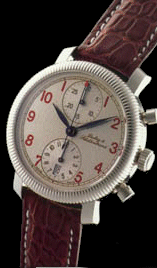 |
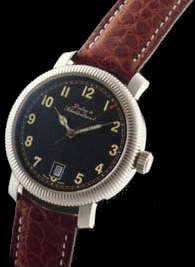 |
| Mr. Dubey's solution was a simple answer to a complicated problem: the "Index Mobile" had a recoil spring located between the dial and the crystal, allowing by a mere pressure on a pusher located in the crown, a calculation of elapsed time of up to 58seconds. This invention earned Mr. Dubey patents worldwide (U.S. patent N°2548101) and a partner, Mr. Rene Schaldenbrand, establishing the Dubey & Schaldenbrand watch brand. |
|
For the frequent traveler, a watch with two timezones is particularly useful. Come to think of it, I almost had a watchmaker remove the second time zone hand from my GMT Master when I bought it, but fortunately changed my mind. The Oris Worldtimer was revolutionary when it came out in that you just have to push a button to change the time. The Girard Perregault Traveler II on the left also has an alarm. For the super-cool in two time zones, I would pick the Reverso Duo below left. |
|
|
I realize full well it is not truly considered a pilot's watch, but to me it incorporates most of the features I like about aviator timepieces: reliability, legibility, robustness, resistance to magnetism, among others. That is why if I had the money sitting around, I would downtown and purchase the IWC Ingenieur tomorrow. I much prefer it on leather strap, unlike the Mark XII, which I like better on steel band. The Ingenieur shares the Jaeger 889/2 as base movement with the Mark XII, but here it is tweaked to become IWC calibre 887/2, chronometer rated. |
| Page 1: hello |
Page 2: nice things |
Page 3: Audemars Piguet |
Page 4: IWC, JLC |
Page 5: Patek Philippe |
| Page 6: Flieger |
Page 7: more Flieger |
Page 8: Zenith, Eberhard |
Page 9: chronographs |
Page 10: big money! |
| Page 11: mo' money |
Page 12: more chronos |
Page 13: less known gems |
Page 14: moonstruck |
Page 15: pictures & links |